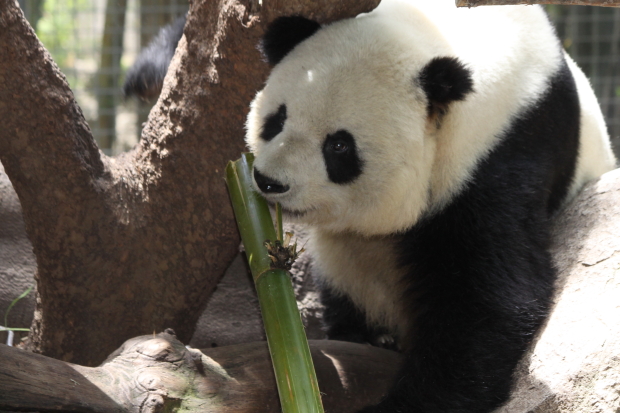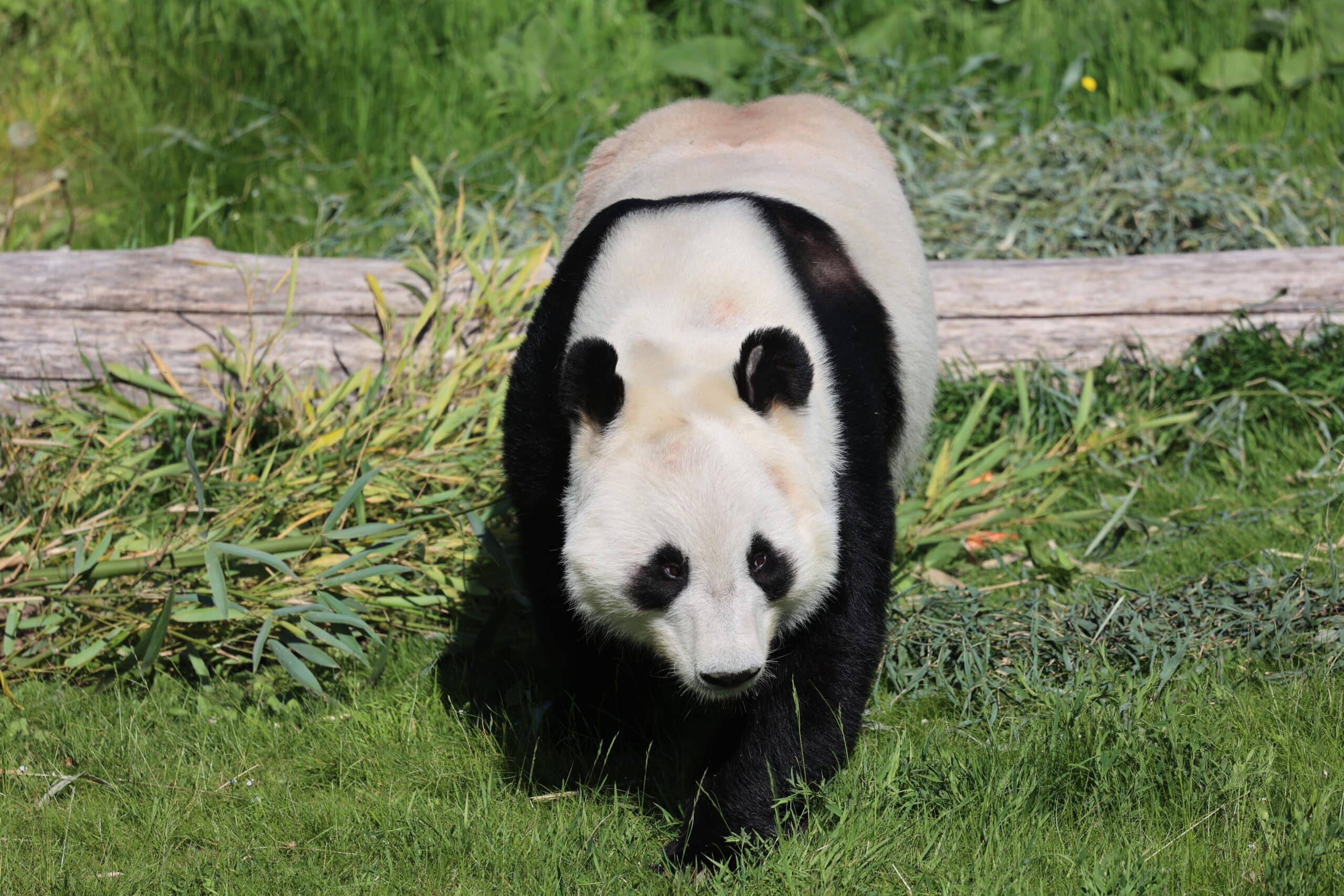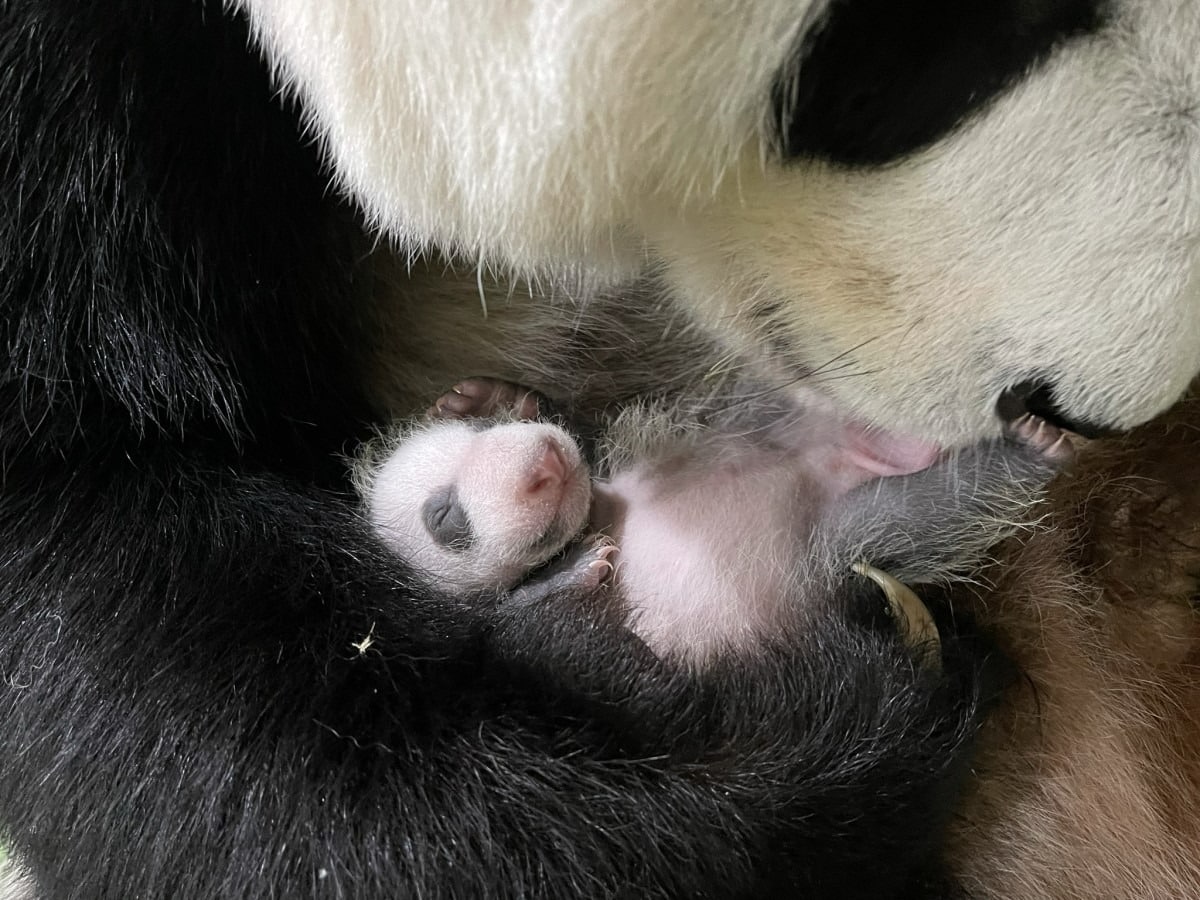Gao Gao is getting Big Big
As many of you may remember, Gao Gao has been having digestive-tract issues for the last year or so, which has led to some strange behavior. He’s had several days when he hasn’t wanted to rise in the morning and has been unresponsive to his keeper’s calls. This behavior is actually pretty common in pandas living in managed-care facilities and occurs in conjunction with the passing of a mucous stool. However, on these days when our boy was “sleeping in,” he would not pass a mucous stool. On other days, we saw lots of his “tongue flicking” behavior, which is biting his tongue and flicking it routinely.
On October 6, 2011, Gao Gao had exploratory surgery in an effort to determine the source of his discomfort (see post Gao Gao: Road to Recovery). The exploratory surgery was used to look for any obstructions that could have caused some of his discomfort. While he was under anesthesia, veterinarians were able to check out every bit of Gao, including his teeth. They discovered that his back molars were very worn down, that some existing bridgework between two of his molars needed repairing, and that one of his canines was loose. Aha! The reason for his tongue flicking and possibly the reason for his digestive issues.
If a panda is lucky enough to die of old age in the wild, the cause of its death is most often starvation. Years of eating bamboo (an extremely strong grass, remember, from which flooring and furniture is made) wear down a bear’s teeth pretty well. When a panda cannot properly break down food in its mouth, the food cannot then be properly digested. Gao is very lucky to live in a managed-care situation, where he has had the necessary dental work and has a team that can adjust his diet. As a result, of course, our poor old man has had to give up some of his favorite foods. But never fear! He’s gained some new ones.
We’ve been steaming “bamboo bread” for Gao Gao, which he receives three times a day as part of his new diet. The bread is made up of ground leaf eater biscuits, dried and ground bamboo stems and leaves, water, and a small bit of gelatin to act as an adhesive. The bread is a soft, palatable food that delivers the same nutrition that bamboo can provide. Basically, it’s easier for him to chew and digest… and boy, does he ever! Our Gao has become a bread addict. Having the bamboo bread in his diet has helped him become “Big Big,” for sure. His latest weight was 174 pounds (79 kilograms), the largest he’s been in many years!
Gao’s also getting bamboo that is smaller in diameter. We have a one-centimeter rule when making up his bamboo diet, meaning any piece that we give him has to be one centimeter in diameter or smaller. We can’t just give him tiny pieces, though. Pandas spend up to 12 hours eating, a large portion of which means stripping the outer green layer off of the bamboo. If he’s only given tiny pieces of bamboo, he doesn’t really have the opportunity to do that. So, we also take large pieces of bambusa oldhamii culm and split it into pieces that are one-centimeter wide. The culm can be any thickness, so long as it’s not too difficult for us to split (by hand, mind you). He gets 60 pieces a day, split into tiny bits by his keepers. Talk about spoiled!
Since his diet changes, Gao had a bout of passing too many mucous stools in a row. Then he had a bout of having episodes similar to those he was having prior to his surgery. We continue to tweak his diet and change the bamboo-bread recipe. We will continue to do so until it’s just right. So far, though, it seems we’re on the right track, and our old man is as sweet and handsome as he ever was.
Juli Thatcher, Senior panda keeper at the San Diego Zoo
Source: San Diego Zoo










